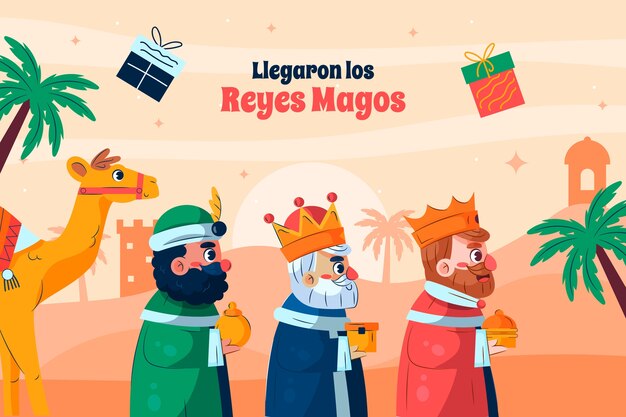

Morocco is known for its vibrant and colorful markets, also known as souks.
Mint tea is a popular drink in Morocco and is traditionally served in small glasses.
The Sahara Desert, one of the largest deserts in the world, covers a significant portion of Morocco’s southern region.
Morocco is home to the highest peak in North Africa, Mount Toubkal, which stands at over 4,000 meters (13,123 feet).
The famous blue city of Chefchaouen is known for its mesmerizing blue-painted buildings and streets.
Morocco is a melting pot of cultures, with influences from Arab, Berber, and French traditions.
The traditional Moroccan dish, tagine, is named after the earthenware pot in which it is cooked.
Morocco is a popular filming location for movies and TV shows, with its diverse landscapes and unique architecture.
The ancient city of Fes has one of the oldest continuously functioning universities in the world, dating back to 859 AD.
Moroccan carpets, known as Berber carpets, are renowned for their intricate designs and craftsmanship.
Morocco is home to several UNESCO World Heritage sites, including the Medina of Marrakech and the Roman ruins of Volubilis.
The coastal city of Essaouira is a paradise for windsurfers and kitesurfers, thanks to its strong winds.
Morocco has a rich musical heritage, with traditional styles such as Gnawa and Andalusian music still prevalent today.
The famous film Casablanca is named after Morocco’s largest city, though it was mainly filmed in Hollywood.
Morocco is known for its stunning architecture, with intricate tile work, known as zellige, adorning many buildings.
The Atlas Mountains in Morocco provide breathtaking landscapes and opportunities for outdoor activities like hiking and skiing.
The traditional Moroccan Hanbal dance is a vibrant and energetic folk dance performed at celebrations and special events.
Morocco is one of the top producers of argan oil, a highly sought-after cosmetic and culinary product.
The ancient fortified city of Ait Benhaddou has been a popular filming location for movies such as Gladiator and Game of Thrones.
The coastal town of Agadir is known for its beautiful beaches, attracting tourists from around the world.
Morocco is the world’s largest exporter of phosphates, an essential ingredient in fertilizers.
The annual Marrakech International Film Festival is a prestigious event that attracts filmmakers and celebrities from around the world.
The traditional Moroccan wedding ceremony, known as a Zawaj, is a joyful celebration filled with music, dancing, and feasting.
Morocco is home to the ancient city of Meknes, known for its impressive imperial palaces and massive city walls.
The famous blue boats in the coastal town of Essaouira are traditionally used for fishing and are a popular symbol of the city.
Morocco is known for its distinct and flavorful cuisine, with dishes like couscous, tajine, and harira soup.
The traditional Moroccan musical instrument, the oud, is a stringed instrument similar to a guitar or lute.
The ancient city of Volubilis is home to well-preserved Roman ruins, including impressive mosaics and a partially intact triumphal arch.
Morocco is known for its handicrafts, including intricate woodwork, vibrant ceramics, and delicate metalwork.
The famous Rick’s Café in Casablanca is designed to replicate the bar from the movie Casablanca and is a popular tourist spot.
The city of Tangier has long been a gateway between Europe and Africa, attracting writers and artists from around the world.
The coastal town of Asilah is famous for its annual arts festival, where international artists come together to paint murals on the town’s walls.
Morocco’s traditional attire includes the djellaba, a loose-fitting robe, and the fez, a distinctive red hat.
The Moroccan flag consists of a red background with the green five-pointed star, representing the country’s Islamic heritage.
The ancient city of Fes is home to the world’s oldest university, University of Al Quaraouiyine, founded in 859 AD.
The town of Ouarzazate is known as the Gateway to the Sahara due to its proximity to the desert and its use as a filming location for many desert scenes.
Moroccan henna art, known for its intricate designs, is often used for celebratory occasions such as weddings and festivals.
Morocco is rich in natural beauty, with diverse ecosystems ranging from the Sahara Desert to the lush valleys of the Atlas Mountains.
The traditional Moroccan hammam is a place for relaxation and cleansing, where locals and visitors can indulge in steam baths and massages.
Gnaoua music, with its hypnotic rhythms and spiritual roots, originated in Morocco and is now recognized as an intangible cultural heritage by UNESCO.
The coastal town of Essaouira is famous for its fresh seafood, with numerous restaurants offering delicious fish and shellfish dishes.
Morocco has a strong tradition of storytelling, with oral traditions passed down through generations, often accompanied by music and dance.
The ancient Roman city of Volubilis was once a major hub for olive oil production, with numerous olive presses still visible today.
The traditional Moroccan hand of Fatima, or khamsa, is a symbol believed to ward off evil and bring good luck.
Morocco’s diverse geography and climate contribute to its varied agriculture, with crops ranging from citrus fruits and olives to saffron and dates.
Around the world, coffee enthusiasts enjoy Monin coffee concentrate since it is a multipurpose product. Conveniently combining…
The Importance of Choosing the Right Shower for Your Bathroom Renovating your bathroom can be…
Usain Bolt holds the record for the fastest 100-meter sprint in history.Bolt was named Sportsman…
Love is in the air... and it smells suspiciously like chocolate!Roses are red, violets are…
Life's a beach, take a picture and relax.Sun, sand, and salty kisses. That's what beach…
Hungary is home to the largest thermal water cave system in the world.The Rubik's Cube…